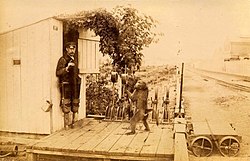Monkeys used in experiments

- Able (rhesus macaque) and Miss Baker (Peruvian squirrel monkey), both female – the first monkeys sent into space who survived the experience. They were launched on 28 May 1959 in the nose cone of a Jupiter AM-18 missile as a test of NASA's launch facilities at Cape Canaveral and procedures for retrieving astronauts after splashdown. Miss Able died a few days after the mission, but Miss Baker lived another 25 years. [1]
- Albert I – (rhesus monkey) the first primate and first mammal launched on a rocket (a June 18, 1948 V-2 flight), although it did not reach space.
- Albert II – (rhesus monkey) the first primate and first mammal in space, June 14, 1949. Died upon hitting the ground due to a parachute failure
- ANDi – (rhesus monkey) the first genetic modified rhesus monkey, born at the Oregon Health & Science University
- Britches – (stump-tailed macaque) removed from his mother at birth, Britches was left alone with his eyes sewn shut as part of a study into blindness. He was rescued by the Animal Liberation Front, which publicized the condition he was found in, and the experiment was shut down.
- Gordo (also known as "Old Reliable") – (squirrel monkey) He was launched in the US Jupiter AM-13 Rocket in 1958, but was lost after a technical failure at the end of the mission.
- Miss Sam – (rhesus macaque) sent into space on Little Joe 1B under the Little Joe program on January 21, 1960. [2]
- Semos – a nine-year-old male rhesus macaque at the Oregon National Primate Research Center who supplied the skin cells from which scientists were able to successfully derive embryonic stem cells. [3]
- Tetra – a rhesus macaque at the Oregon National Primate Research Center who was the first cloned primate, created through splitting. [4]
